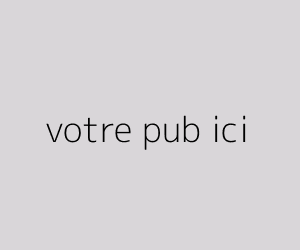- 15:35Trudeau Government Orders TikTok to Close Canadian Offices, but Access Remains Unrestricted for Users
- 14:55Israeli Parliament Approves Controversial Law to Deport Relatives of Alleged ‘Terrorists
- 14:20MP Mike Amesbury Faces Assault Charge Following Alleged Street Incident
- 13:12Trump's Election Sparks Unprecedented Surge in Billionaire Wealth
- 12:12Morocco Showcase Summit: A Gateway to Tourism and Investment Opportunities
- 11:13Urgent Calls and Delayed Action: A Closer Look at Valencia's Flood Response Crisis
- 10:40Over a Decade of Service to Casablanca's Mobility
- 09:57Trump's Return to Power: Promises and Challenges Ahead
- 09:22Morocco's Unyielding Commitment to Its Territorial Integrity in the Sahara
Follow us on Facebook
Breakthrough in HIV Prevention: Bi-Annual Injection Shows Unprecedented Efficacy
In a groundbreaking development that could reshape the landscape of HIV prevention, a recent study has revealed that a twice-yearly injection offers complete protection against HIV infection in women. The results, published in the *New England Journal of Medicine* and presented at an AIDS conference in Munich, have sent ripples of excitement through the medical community and offer new hope in the ongoing battle against the global AIDS epidemic.
The study, conducted in South Africa and Uganda, involved approximately 5,000 participants and yielded astonishing results. Women and girls who received the bi-annual injections showed no new HIV infections, while a control group taking daily prevention pills experienced an infection rate of about 2%. This stark contrast underscores the potential game-changing nature of this new preventive measure.
Salim Abdool Karim, director of an AIDS research center in Durban, South Africa, who was not involved in the research, expressed amazement at the findings, stating, "To see this level of protection is stunning." His sentiment echoes the broader reaction within the scientific community, where the results are being hailed as a significant leap forward in HIV prevention strategies.
The injections, developed by U.S. pharmaceutical company Gilead and marketed as Sunlenca, are currently approved in several countries, including the United States, Canada, and across Europe, but only as a treatment for existing HIV infections. Gilead has indicated that it is awaiting results from trials involving men before seeking approval for its use as a preventive measure.
This new approach to HIV prevention addresses a critical issue that has long plagued efforts in Africa: consistency in medication adherence. The study revealed that only about 30% of participants given daily prevention pills actually took them consistently, with this figure declining over time. Thandeka Nkosi, who assisted in conducting the Gilead research at the Desmond Tutu Health Foundation in Masiphumelele, South Africa, highlighted the transformative potential of a bi-annual injection, noting that it "gives participants a choice and it just eliminates the whole stigma around taking pills" for HIV prevention.
While the medical community is abuzz with excitement over Sunlenca's potential, concerns have been raised about its accessibility. Experts are urging Gilead to establish an affordable pricing structure that would make the treatment available to those who need it most, particularly in developing countries where HIV rates remain high.
Winnie Byanyima, executive director of the Geneva-based U.N. AIDS agency, emphasized the potential impact of this new tool, stating that it "could change the trajectory of the HIV epidemic." She called on Gilead to share Sunlenca's patent with a U.N.-backed program that facilitates the production of affordable generic versions of crucial medications for poorer nations.
The pricing issue is particularly critical given the current cost of Sunlenca as an HIV treatment in the United States, where it exceeds $40,000 per year. Dr. Helen Bygrave of Doctors Without Borders stressed the potential of these injections to "reverse the epidemic if it is made available in the countries with the highest rate of new infections," urging Gilead to establish an affordable price point for all countries.
Gilead has responded to these concerns, stating that it is premature to discuss pricing for Sunlenca as a preventive measure in lower-income countries. Dr. Jared Baeten, Gilead's senior vice president of clinical development, assured that the company is already in discussions with generic manufacturers and recognizes the urgency of the situation.
The development of Sunlenca comes at a crucial time in the global fight against HIV/AIDS. According to UNAIDS, women and girls accounted for 46% of new HIV infections globally in 2022, with African women three times more likely to contract HIV than their male counterparts. The bi-annual injection could prove particularly beneficial for vulnerable populations, including victims of domestic violence and individuals in countries where same-sex relationships are criminalized.
As the medical community eagerly awaits further developments, including results from male trials and decisions on pricing and distribution, the potential of Sunlenca to revolutionize HIV prevention remains clear. Andrew Hill of the University of Liverpool summed up the sentiment of many in the field, stating, "This is about as close as you can get to an HIV vaccine."
The journey from this promising study to widespread implementation may be complex, but the results offer a beacon of hope in the ongoing struggle against HIV/AIDS. As research continues and discussions about accessibility unfold, the world watches with anticipation, hopeful that this breakthrough could mark a turning point in the global effort to end the AIDS epidemic.



